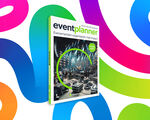There's no shortage of articles advising people on how to get the most out of attending conferences. A quick Google search will reveal dozens of posts especially written for attendees with tips on how to choose the best conferences or take good advantage of coffee breaks to professionally network. However, there’s one piece of advice these articles tackle the most: how to learn and acquire new knowledge by attending conferences. Nothing unusual, right? Not until you actually read these pieces.
According to an INC article, for example, "from time to time you'll go to a session with high hopes, only to realize it's not hitting the mark, or meeting your expectations, so look through the agenda and pick the ones you think are the best fits. If they don't measure up, don't feel bad about leaving a session if it's not meeting your needs. You paid to be there and need to make the most of it."
Conversely, Science magazine published a series of general testimonials from conference attendees. One testimonial read, "When there were two sessions at the same time, I went back and forth from one to the other. This was a terrible mistake. It was not productive at all, and I finished exhausted and stressed."
These and other articles highlight a series of learning-related problems attendees may experience such as dealing with informational overload, having to choose between simultaneous equally interesting sessions, or passively listening instead of actively doing.
Considering that, according to Hubspot, "84% of respondents feel that attending events is an important part of their job, with 79% going to events specifically to learn something", it's important to change something about the educational value of conferences.
One way to reinvent and boost the educational layer of your conferences is by using different progressive pedagogy techniques, which focus mainly on firsthand experience and learning by doing. Here's how:
Tip 1. Design a context for skill development
We’re all familiar with the multi-session conferences where attendees must choose the lectures they want to attend. Event professionals often present this dynamic as a cool way of empowering guests to personalize their conference experience.
However, it may be quite overwhelming when an attendee has to decide from tens of equally attractive sessions. Plus, it again puts the attendee in the position of a passive listener. Moreover, the attendee may decide to “jump” from session to session, without focusing on anything particular.
So how about changing the format of your conference by offering a common plenary session, which explains a general topic, then letting your guests choose from a series of workshops where they could learn different skills related to the general topic.
Let your audience know that once they choose the workshop they want to attend, they can’t change it, as it requires full dedication and practical involvement. By doing so, you’ll be able to mix knowledge and training sessions. Plus, you’ll encourage your attendees to focus on their learning and actually practice their new skills.
Tip 2. Provide step-by-step guides
Instead of bombarding your attendees with session summary books or other prints, you could offer them a series of practical guides. For example, if you are planning an event for young tech entrepreneurs, you could gather useful information about how they can find investors or market their businesses better. Then, you could present some recommendations in a useful booklet that actually teach them something valuable.
Tip 3. Avoid information overload
Sometimes less is more. Don’t try to stuff the event agenda with everything you can come up with. If the topic of your conference is about marketing, for example, don’t try to tackle every single aspect of this concept. Instead, focus on something concrete, such as inbound marketing. Subsequently, create a list of speakers that you think would be able to discuss this specific type of marketing from different perspectives. By not overwhelming your attendees, they can focus their attention on one subject and have an in-depth learning experience.
Tip 4. Engage the attendees in an ongoing project
A powerful conference learning experience involves the possibility of working on something larger, joining forces with other attendees. Furthermore, you could help your audience practice their new skills outside the conference by developing (in groups) different projects they could start during the event. Subsequently, you could announce a date for a project submissions contest (let’s say three months after the conference), and offer your attendees valuable prizes such as a discount for next year’s conference or even the chance to present at next year’s event.
Tip 5. End with an evaluation session
Encourage your attendees to review everything they’ve learned during the conference and the real-life contexts where they could apply their new skills. Set up a general evaluation session where people could gather in groups and discuss the main conference takeaways.
Wrap up
Learning is one of the most important reasons why people attend conferences. That’s exactly why you should be extra aware about your attendees’ needs when designing their learning journey. Progressive education can help you with that by providing you with the necessary tools to set up a different educational strategy.
Help your attendees learn by offering them the possibility to practice their skills and apply their newfound knowledge your conference speakers will deliver. Empower your audience by giving them an organic educational experience that will actually have a positive influence on their professional or personal lives.








